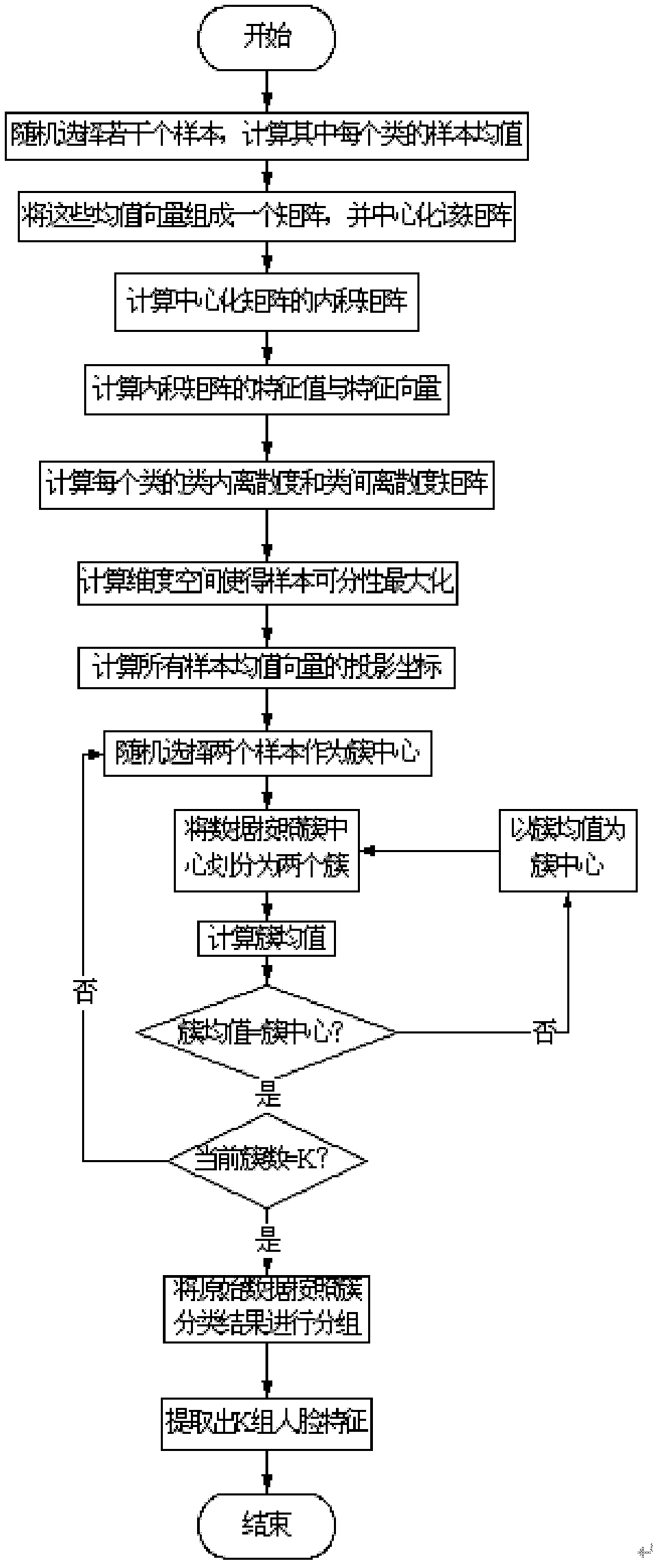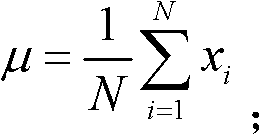Fast face recognition method in application environment of massive face database
An application environment and recognition method technology, applied in the field of rapid face recognition, can solve the problems of lower recognition rate, increased recognition time, difficult to find space, etc., to achieve the effect of improving real-time performance and reducing recognition time
- Summary
- Abstract
- Description
- Claims
- Application Information
AI Technical Summary
Problems solved by technology
Method used
Image
Examples
Embodiment Construction
[0054] Below in conjunction with specific example, further elaborate the present invention, this example adopts CAS-PEAL-R1 face database, the photo category number is 400, each person takes 2 photos as training samples, and photo pixel is 100*100.
[0055] Input: a large amount of face databases, K=40, N=800 (the number of samples in the face database), C=400 (the sample category number in the face database);
[0056] Output: 40 sets of facial features;
[0057] step 1:
[0058] Calculate the sample mean for all test samples in the face database;
[0059] x is a 100*100-dimensional random vector, and the face library X contains a set of data {x i |i=1, 2, ..., 800}, express it as a matrix form x=[x 1 , x 2 ,...,x 800 ], calculate the sample mean vector:
[0060] μ = 1 800 Σ i = 1 800 x i ...
PUM
 Login to View More
Login to View More Abstract
Description
Claims
Application Information
 Login to View More
Login to View More - R&D
- Intellectual Property
- Life Sciences
- Materials
- Tech Scout
- Unparalleled Data Quality
- Higher Quality Content
- 60% Fewer Hallucinations
Browse by: Latest US Patents, China's latest patents, Technical Efficacy Thesaurus, Application Domain, Technology Topic, Popular Technical Reports.
© 2025 PatSnap. All rights reserved.Legal|Privacy policy|Modern Slavery Act Transparency Statement|Sitemap|About US| Contact US: help@patsnap.com



